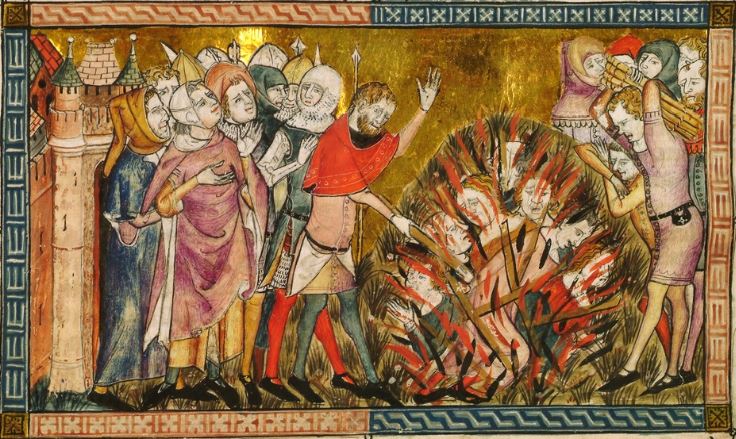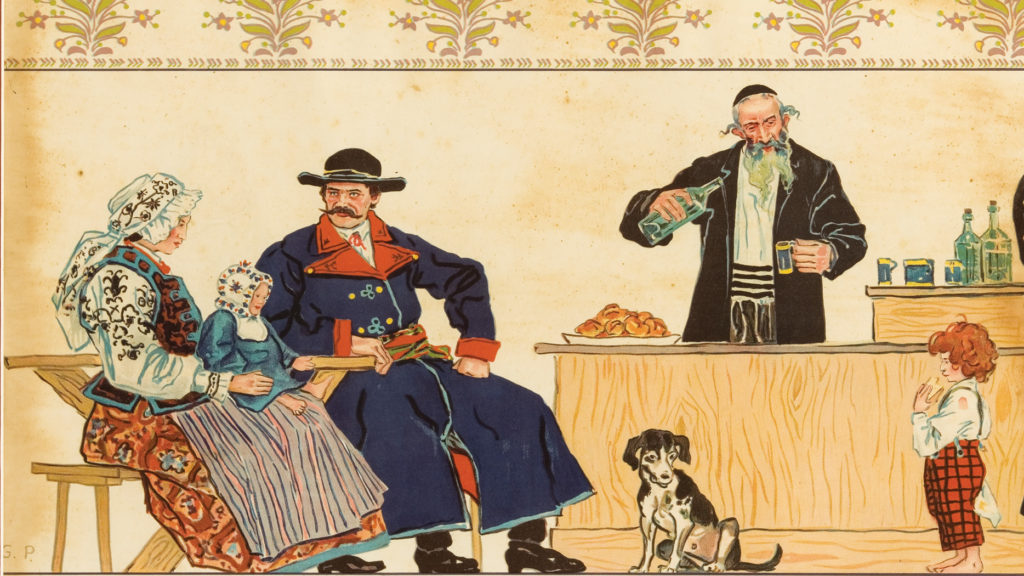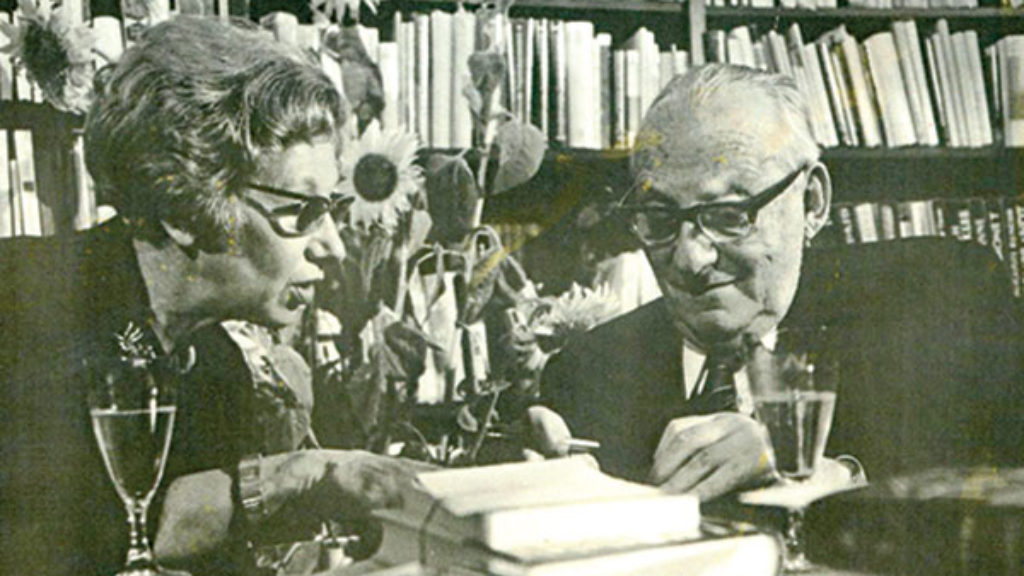Jews, Genes, and the Black Death
In his History of the Jews, the 19th-century historian Heinrich Graetz told a familiar story about the bubonic plague pandemic that swept Europe from 1347 through 1351, killing at least 25 million people and inspiring a series of anti-Jewish massacres, in which hundreds of Jewish communities were destroyed, and thousands of Jews were murdered:
The Black Death had indeed made itself felt among Jews also; but the plague had visited them in a comparatively milder form than the Christians, probably on account of their greater moderation, and the very careful attention paid their sick. Thus the suspicion arose that the Jews had poisoned the brooks and wells, and even the air, in order to annihilate the Christians of every country at one blow.

Were European Jews able to largely avoid the plague, as Graetz wrote, because of their “moderation” and their attention to their sick? Writing more than a century after Graetz, medievalist Norman Cantor suggested that the “popular belief that Jews were responsible for the Black Death . . . was inspired or at least exacerbated by a visibly lower incidence of the plague among Jews,” which he attributed to the “personal cleanliness, good housekeeping, and highly selective diets” prescribed by Jewish law.
This is the version of history that many of us heard in Hebrew school. We call it the Jewish cultural exceptionalism hypothesis: Jews were saved from the plague by handwashing, kashrut, and burying their dead quickly—and then were scapegoated and murdered in large numbers by their neighbors due to their relative health. In 1999, the medical historian Martin Blaser added the suggestion that cleaning for Passover might have helped, since the requirement to remove old grain products would have kept the rats away.
None of these or similar claims are scientifically plausible. Bubonic plague is caused by the bacterium Yersinia pestis, which, during the 14th century, was carried by the black rat (Rattus rattus) and transmitted by the tropical rat flea (Xenopsylla cheopis), which jumped from rats to humans, infecting them with the disease. The infected person soon suffered from fever, seizures, and the characteristic painful swelling of the lymph glands called buboes, which Boccaccio described in The Decameron as “as large as a common apple” and “an infallible token of approaching death.” If the Jews avoided this fate at a significantly higher rate than their Christian neighbors, it could not have been because they washed their hands more. No amount of handwashing could have prevented the flea bites through which the disease was spread, and neither would a kosher diet. As for Passover cleaning, rats can eat matza as well as bread, and, in any case, even if they were scared away by a good Passover cleaning, wouldn’t they just come back?
For these and other reasons, some scholars have concluded that Jews didn’t really survive at higher rates than non-Jews during the plague and that contemporary claims they did were merely paranoid fantasies of medieval anti-Judaism. The cultural anthropologist and physician Leonard Glick, for example, has concluded that “it is likely that [the Jews] were afflicted as much as anyone else.”
However, we argue that contemporary reports that Jews seemed less susceptible than others to the plague were not delusional. Nonetheless, Jews’ relative immunity had nothing to do with ritual cleanliness or kashrut. The reason, we believe, was genetic, not cultural.
We believe that the answer lies in a recessive genetic mutation—familial Mediterranean fever (FMF), which is found mostly in people of Middle Eastern ancestry. In 14th-century Europe, the most prominent and visible group of such people would have been Jews. FMF causes recurrent fevers and painful inflammation of the abdomen, lungs, and joints. However, as a 2020 study at the National Human Genome Research Institute showed, it also makes its carriers resistant to the bubonic plague.
When Yersinia pestis enters the body, it disguises itself as benign. In particular, it effectively tells the body not to produce a protein called pyrin, which is a major player in initiating the immune system to fight foreign bacteria that is produced by the gene associated with FMF. Virtually unchecked, Yersinia pestis then runs amok, the infected buboes appear, and death soon follows. However, carriers of FMF have an advantage in their pyrin production—essentially the pyrin switch is always on, so Yersinia pestis cannot shut down its production. Thus, when someone with the FMF mutation is infected with the bubonic plague, it renders their body relatively resistant to contracting the disease.
A recent analysis of four hundred blood samples in Tel Aviv found FMF in 39 percent of Jews of Iraqi origin, 22 percent of Jews from North Africa, and 21 percent of Ashkenazi Jews. In another Israeli study, 14 percent of Jews of Turkish origin and 20 percent of Jews from Bukhara, Georgia, and Bulgaria carried the mutation. Altogether, it seems that 20 to 40 percent of Israeli Jews might carry the FMF mutation. Since FMF is a recessive gene, its carriage rate has likely declined since the 14th century, meaning that many more Jews would have carried the FMF mutation at the time of the plague. If so, this would explain the contemporary impression that Jews survived the plague in disproportionate numbers compared with their Christian neighbors. The fact that thousands of them were then murdered, in part because of their congenital immunity, is one of the tragic ironies of history.
If our hypothesis is correct, then advances in modern genetics have solved an almost seven-hundred-year-old historical mystery about the deadliest pandemic in recorded history and the human misery it unleashed. It also highlights the important relationship between history and science.
Comments
You must log in to comment Log In
Suggested Reading

Come Here to Me, You Fortunate Citizen of the World
Zalmen Gradowski’s testimony makes the sadism of the Nazi enterprise painfully clear. That seems obvious, but it runs counter to most Holocaust education.

Poland’s Jewish Problem: Vodka?
Jewish-run taverns—rowdy, often very seedy drink-holes—served to cement, rather than sour, the impossibly tense and intertwined lives of Poles and Jews, as a new book by Glenn Dynner shows.

Athens or Sparta?
A new "inside story" of the Israeli military reveals more about the current prejudices of the chattering classes than it does about Israel and its neighbors.

Lost from the Start: Kafka on Spinoza Street
Jerusalem-based writer Benjamin Balint has crafted a wise and eloquent study of Kafka around the eight-year battle in Israeli courts over Max Brod’s literary estate.
stephen fein
What about Parkinson's disease?
Bert Zackim
Good afternoon, My mother was a Russian Jew, dark complexion, my father from Bialystok
came from a fair skinned family. I am exceedingly a fair complexioned, blonde, blue eyes and I, wandering about in Sweden, Finland and Demark i saw my face, as I am most likely
a decendant of Norsemen, the Vanished Vikings, I was mistaken for a Swede, or a Norwegian.
What is the theory of a pure race....and yes much is genetic, longevity, disease, mental illness
and intellectual curiosity are gifts of our origins. They tell the story better than in
some lab. Go figure.